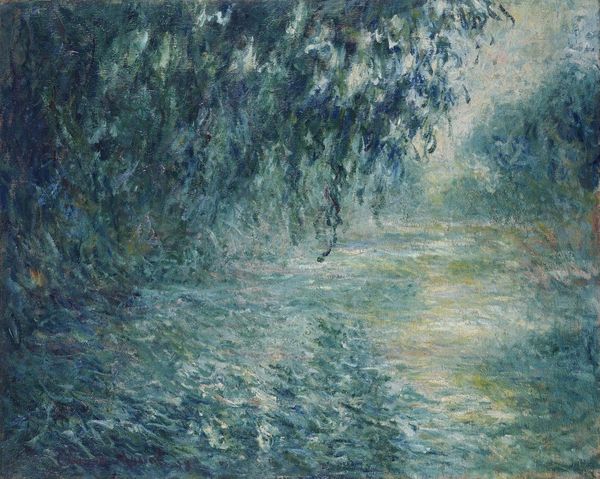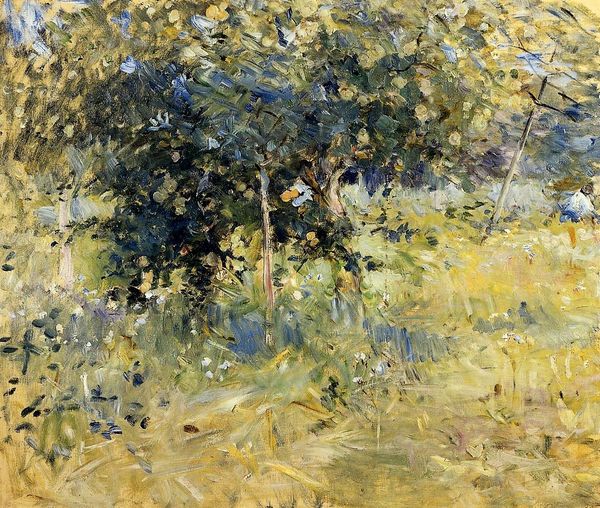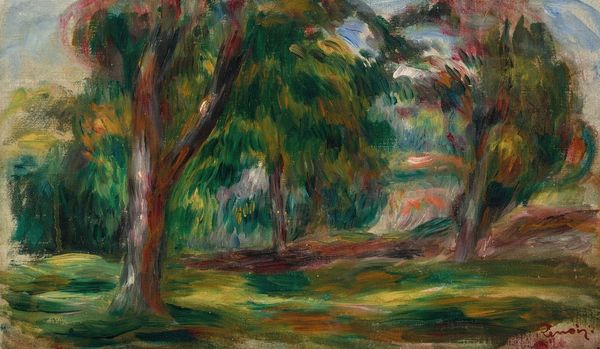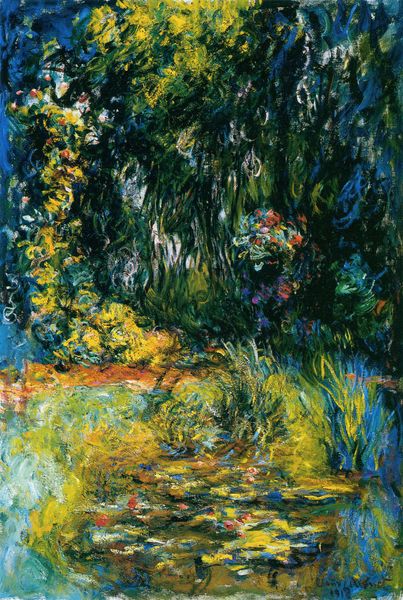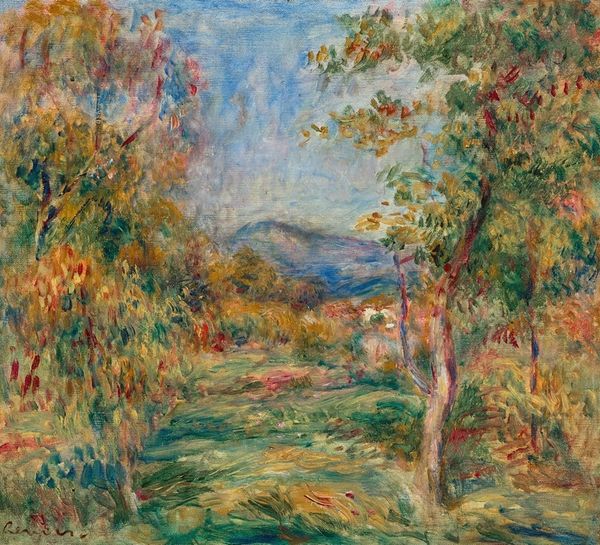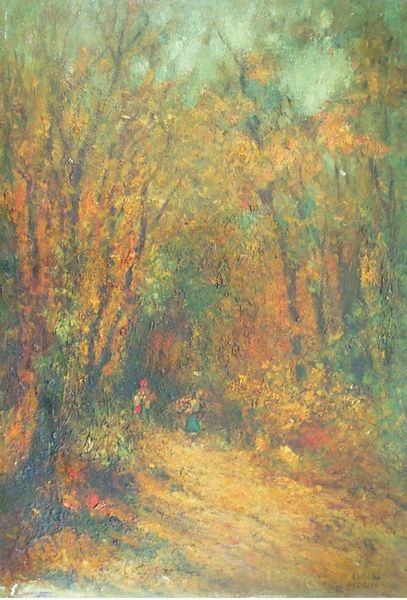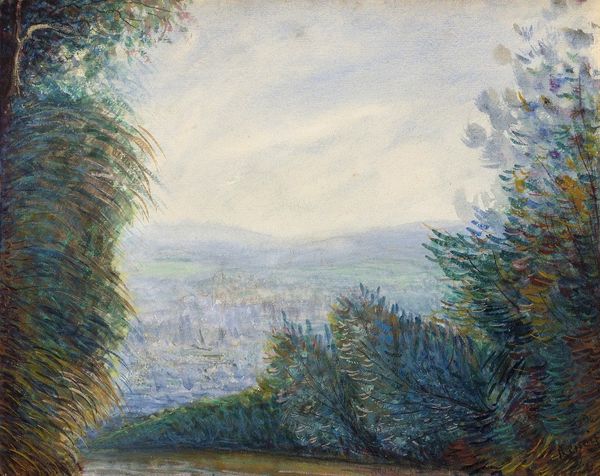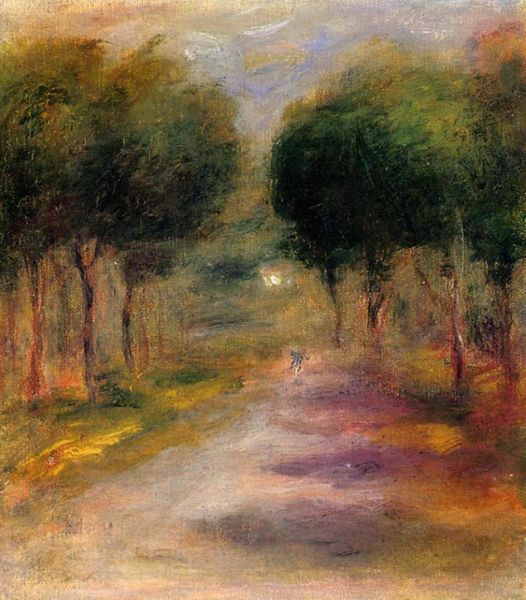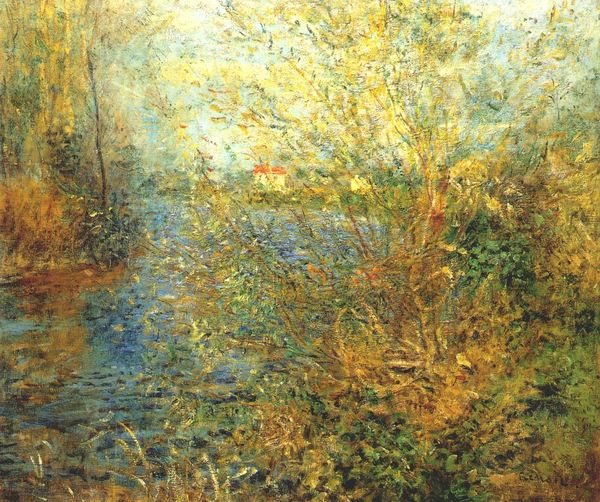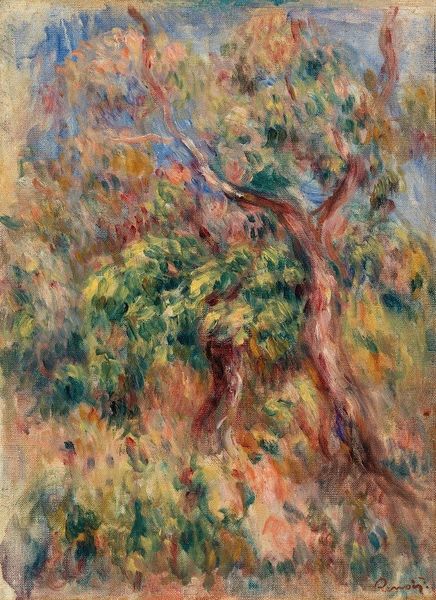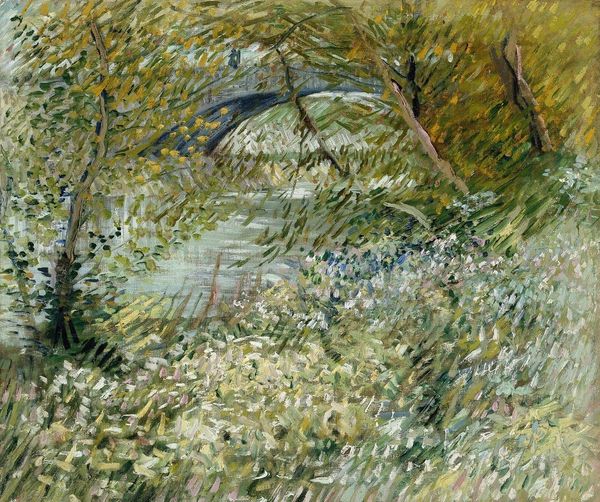
painting, plein-air, oil-paint
#
painting
#
impressionism
#
plein-air
#
oil-paint
#
landscape
#
impressionist landscape
Copyright: Public Domain: Artvee
Curator: We're looking at "Garden," a plein-air oil painting created by Pierre-Auguste Renoir around 1877. Editor: Immediately striking is the almost tactile quality of the paint. It feels less like a landscape and more like a concentrated mass of interwoven textures and greens. Curator: Exactly. Renoir's dedication to capturing fleeting light and atmosphere through short brushstrokes is quintessential Impressionism. But let’s not disregard the materiality—consider the ground pigments suspended in the oil, a substance refined by industrial advancements, readily available for portable painting excursions. Editor: I see that clearly. And it highlights something that gets often overlooked: the materiality directly impacted how Impressionist painters, including Renoir, worked en plein air. Factory produced paints freed artists to create at a rapid pace outside the constraints of the studio, influencing its compositional choices. Curator: Indeed, this shift affects pictorial structure; for instance, note how the forms seem dissolved. The distinction between foreground and background nearly vanishes as the light filters down to touch the flora on the trail. This kind of semi-abstract representation reflects an artistic departure—how reality might be observed beyond objective depiction. Editor: It's less about a faithful representation of nature and more about Renoir's engagement with paint as substance. His method wasn't merely observational; it was an active and engaged form of interacting with the very materials from which the garden emerges as paint applied onto canvas. I am intrigued how the industry played its role into creating a masterpiece of light. Curator: A symbiotic act where form meets material substance through an exchange of industry-primed pigments. Editor: Ultimately it makes one reflect that what looks spontaneous required a complex mediation of processes beyond art itself.
Comments
No comments
Be the first to comment and join the conversation on the ultimate creative platform.

